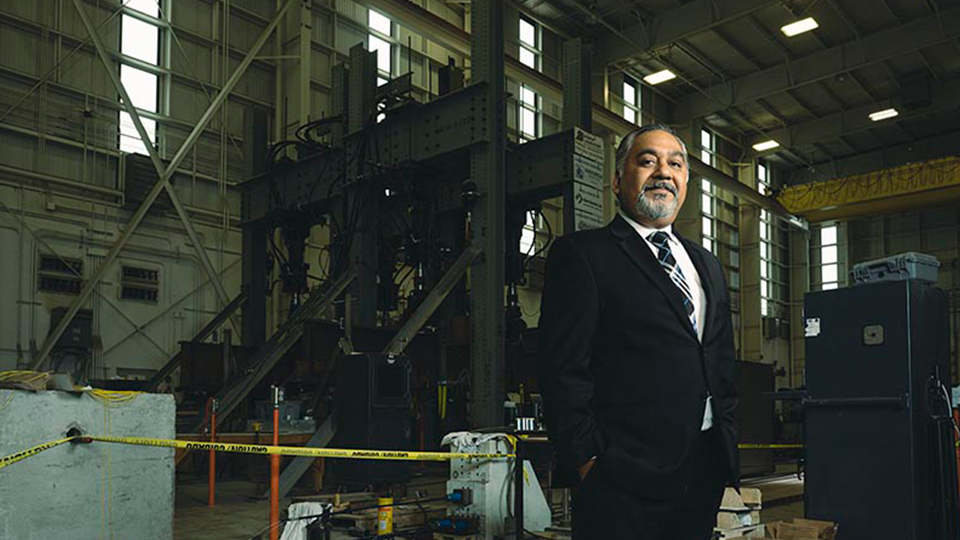‘Concrete sandwich’ with roots at Purdue earning recognition
Subscriber Benefit
As a subscriber you can listen to articles at work, in the car, or while you work out. Subscribe Now
A steel and concrete composite system used in the construction of high-rise buildings that was co-developed by a professor at Purdue University is gaining national recognition. Known as SpeedCore, the system involves parallel steel plates connected by metal rods, which are fabricated in a shop and shipped to the field, that can be filled with concrete, creating a so-called “concrete sandwich” and eliminating the need for rebar, rebar cages, framework or scaffolding.
A 58-story building in downtown Seattle, Rainier Square, was recently honored for using SpeedCore, which cut construction time by 10 months, or nearly 40%.
SpeedCore was co-developed by Amit Varma, a professor of civil engineering at Purdue, who told the Associated Press the system is a game changer in terms of project economics.
“When you take the construction schedule reduction into account, it reduces the duration of the loans that the builder may have to take and accelerates how quickly they can start making revenue by renting the constructed structures,” Varma said. “It also opens up the site for different trades, such as the steel erector and the concrete contractor to work collaboratively and leverage each other’s resources to better execute the project.”
Varma is also the director of Purdue’s Robert L. and Terry L. Bowen Laboratory for Large-Scale Civil Engineering Research.
Varma first began his research on the system in 2006 and was joined by Ron Klemencic, a Purdue alum who is chairman and CEO of Seattle-based engineering firm Magnusson Klemencic Associates.
SpeedCore is especially beneficial for high-rise buildings that need a solid interior core to maintain their safety from high winds and earthquakes, which can cause varying levels of swaying, Varma said.
“In addition to earthquake resistance, we also have looked at the fire resistance of this system because of the steel plates,” Varma said. “There’s always the question of what fire is going to do to such a construction. So we’ve done actual testing and analysis and developed earthquake-resistant and fire-resistant design equations for the system as well.”
In addition to Rainier Square, another building made with SpeedCore has been built in the high-seismic region of San Jose, California. Purdue said there are additional plans for more high-rise buildings using SpeedCore this year and in the future.
Varma said in the next five to 10 years, he believes SpeedCore will define and become a part of the market niche for building construction.
“There’ll be many more situations where it will be the right answer for the construction schedule or project economy,” he said. “I believe that it will also be used more and more in the non seismic region with simpler bolted connection details that allow for faster erection. I think that most practitioners, engineers and project owners will seriously consider it for their projects.”
